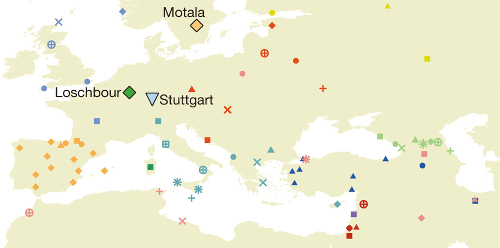Using AI to control energy for indoor agriculture
30 September 2024
Published online 23 September 2014

© Nature
In a study published in Nature1 last week, a large international team, including contributors from Oman and Morocco, sequenced the ancient genomes of a ~7,000-year-old farmer from Germany, and eight ~8,000-year-old hunter-gatherers from Sweden and Luxembourg, and compared them to 2,345 contemporary European genomes. The patterns of SNPs—single base variations between the genomes—were used to trace back the ancestry of modern-day Europeans, and propose a new model of prehistoric European population dynamics.
The results indicate that, contrary to previous thought, farming was not introduced into Europe by immigrants from the Near East who replaced native Europeans, but rather that native Europeans had already intermixed with the Eurasian immigrants before their arrival in central Europe.
This provides new insight into the origin of farming in Europe, and shows that present-day Europeans originate from an ancestral mix of three distinct populations; west European hunter-gatherer, early European farmer (a mix of indigenous Europeans and near Eastern immigrants) and ancient north Eurasian – an older Eurasian population that split before the emergence of the early European farmer.
doi:10.1038/nmiddleeast.2014.235
Stay connected: